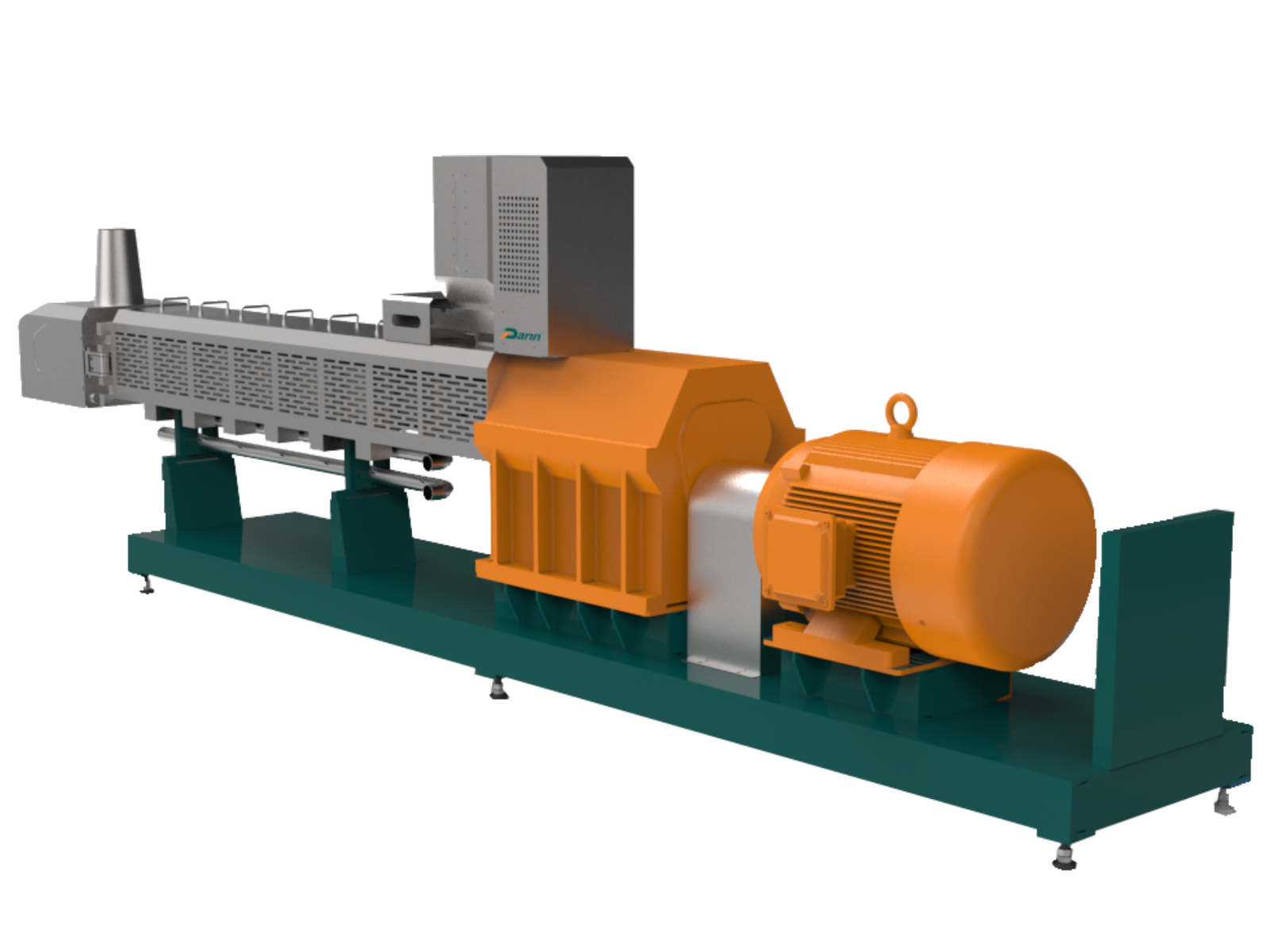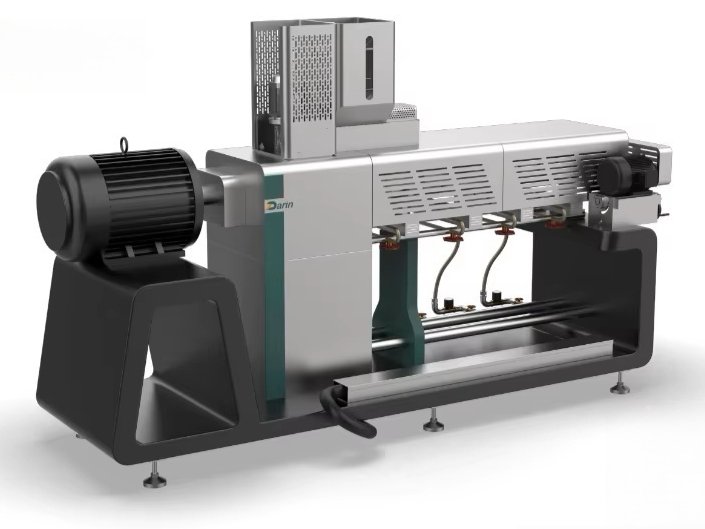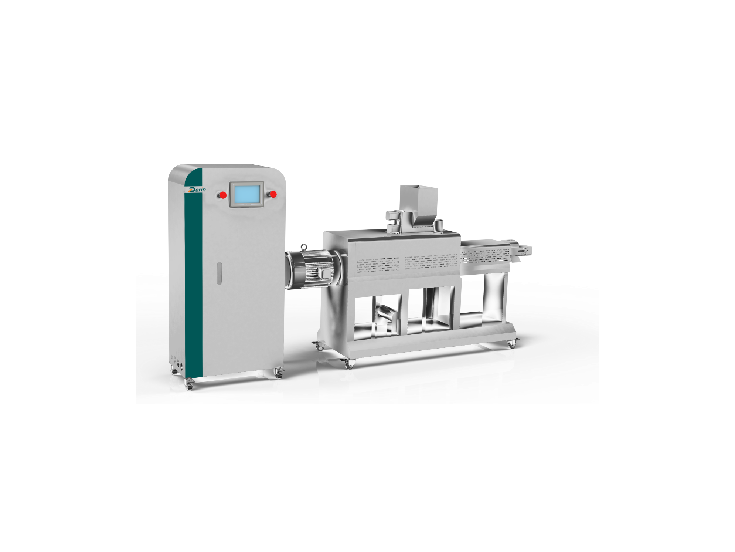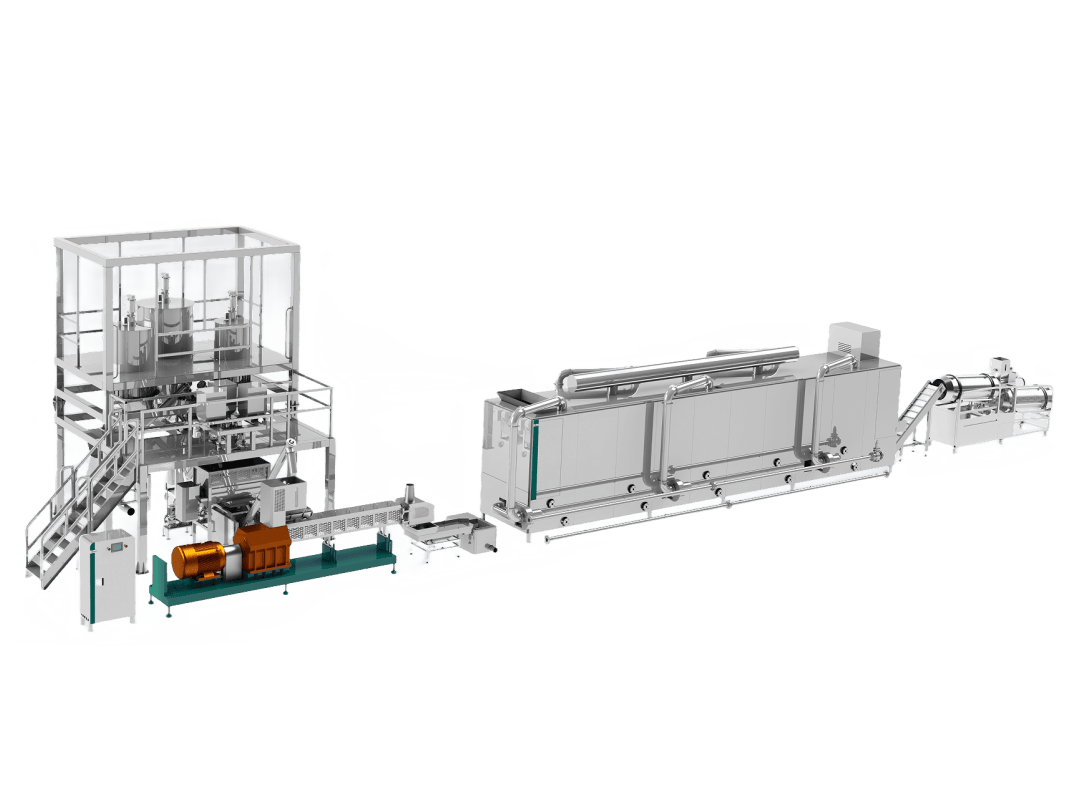
When I first considered making commercial dog food, I was both excited and overwhelmed. With pet ownership booming, quality dog food seemed like a promising venture.
To make commercial dog food, you'll need to develop balanced recipes, source quality ingredients, adhere to stringent regulations, and establish efficient production processes. This includes understanding nutritional guidelines and investing in suitable machinery.
I remember standing in my kitchen, surrounded by bags of ingredients and wondering where to start. It's not just about mixing up some meat and grains. You have to dive into the science of pet nutrition, ensuring every batch is balanced and healthy. Then, there’s the challenge of sourcing top-notch ingredients—because our furry friends deserve nothing but the best. Navigating regulations can feel like learning a new language, but it’s crucial for ensuring safety and quality. And let's not forget about production efficiency—those machines are not just shiny toys; they're essential for scaling up while maintaining consistency. It’s a journey that’s as rewarding as it is demanding.
Commercial dog food must meet nutritional guidelines.True
Regulations require commercial dog food to adhere to established nutritional standards.
All dog food brands use the same production machinery.False
Different brands invest in varied machinery based on their recipes and production scale.
What Nutritional Guidelines Should You Follow?
Let's unravel the secrets of nutritional guidelines together, transforming our meals into a journey of health and flavor.
To follow nutritional guidelines effectively, focus on balanced meals with a variety of foods, including fruits, vegetables, whole grains, lean proteins, and healthy fats. Limit added sugars, sodium, and saturated fats for optimal health.
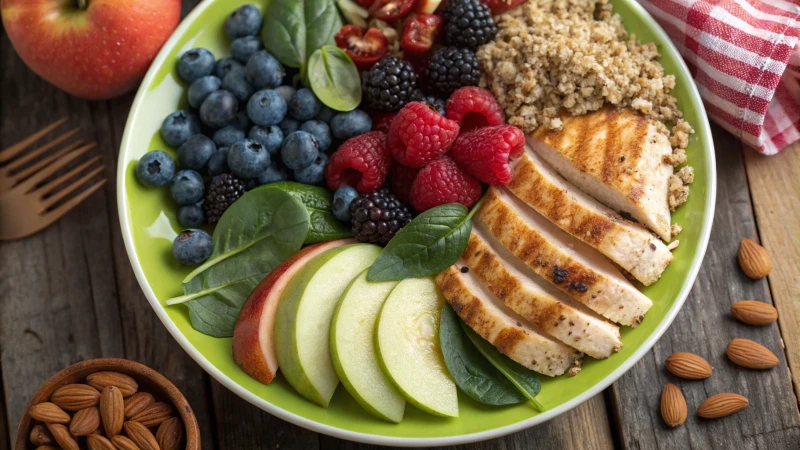
Understanding Nutritional Guidelines
When I first embarked on my journey to healthier eating, it felt like trying to decipher an ancient script. But over time, I realized that sticking to the basics of established nutritional guidelines simplifies everything. It's all about enjoying a colorful array of fruits and vegetables to harness the full spectrum of vitamins and minerals our bodies crave.
Building Balanced Meals
Think of each meal as a canvas, where you get to paint with different food groups. I've found this structure handy:
| Food Group | Portion |
|---|---|
| Vegetables | Half your plate |
| Proteins | Quarter your plate |
| Whole Grains | Quarter your plate |
This not only ensures a balanced intake but also keeps me mindful of my calorie consumption, which is a win-win!
Limiting Unhealthy Ingredients
I remember my love affair with sugary sodas and pastries – sweet but not exactly heart-friendly. Cutting down on added sugars1 and saturated fats has been crucial in improving my health.
- Added Sugars: Instead of reaching for candies, I opt for natural sweetness from fruits.
- Saturated Fats: Swapping fatty meats for leaner options or plant-based proteins has made all the difference.
The Role of Portion Control
Even the healthiest foods can become a problem if I overindulge. Learning portion control has been like finding the right balance in a delicate dance.
- Use Measuring Tools: I use cups and scales for accuracy.
- Visual Cues: A serving of protein should be about the size of a deck of cards.
Staying Hydrated
Water is my unsung hero – it's amazing how something so simple aids digestion and keeps my body ticking.
- Daily Intake: I aim for at least eight 8-ounce glasses daily.
- Alternatives: Herbal teas and water-rich fruits like watermelon help me stay hydrated too.
Navigating Special Diets
Adapting these guidelines to my dietary needs was a game changer. For example, as someone who once flirted with vegetarianism, focusing on diverse plant proteins like beans and lentils kept my meals exciting and nutritious.
For those exploring gluten-free options, grains like quinoa or rice can be satisfying substitutes. The key is tweaking these guidelines to fit personal health goals and nutritional requirements. Remember, it's not about perfection but about finding what works for you.
Half your plate should be filled with vegetables.True
This helps ensure a balanced intake of nutrients and supports healthy eating.
Saturated fats are recommended for daily consumption.False
Saturated fats should be limited as they can contribute to health issues.
How can I source high-quality ingredients?
Imagine walking through a bustling market, the vibrant colors and fresh scents promising a culinary masterpiece waiting to happen.
To source high-quality ingredients, prioritize local suppliers, verify certifications, build relationships with trusted vendors, and stay informed about seasonal availability. Conduct regular audits to ensure consistency and adherence to quality standards.

Understanding Ingredient Quality
The journey to sourcing high-quality ingredients is like a treasure hunt that ends in your kitchen. Each ingredient tells a story of where it came from and how it was grown or produced. I remember visiting a local farmer's market for the first time; the difference in taste and texture of farm-fresh produce was like discovering a secret ingredient to an old family recipe. This taught me that quality isn't just about taste, but also about the sustainability2 and ethics behind each item.
Building Relationships with Suppliers
Creating relationships with local farmers and producers is akin to finding allies in your culinary adventure. I once struck up a conversation with a vendor who gave me a tip on when their tomatoes would be at peak ripeness. It felt like being let in on a little secret that only those in-the-know could access. These connections not only ensure freshness but also provide insights into seasonal availability3 and the love that goes into growing each product.
Certifications Matter
Seeking out certified products is like having a trusted guide on this journey. Whether it's organic or fair trade, these labels act as a compass pointing toward quality. For me, seeing a fair trade certification feels like knowing my purchase supports ethical practices and fair treatment of producers. It's reassuring to know that each purchase aligns with my values, much like finding a brand that speaks your language.
| Certification | Description |
|---|---|
| Organic | Free from synthetic additives |
| Fair Trade | Ethical treatment of producers |
| ISO | International quality standards |
Seasonal and Local Sourcing
There's something magical about cooking with ingredients that are in season—it's like nature's way of helping your dishes sing. I've found that local sourcing not only enhances flavors but also gives back to the community. Engaging with regional networks4 often leads to discovering new suppliers who share the same passion for quality.
Regular Audits and Quality Checks
Consistency is key in the culinary world, and regular audits ensure that quality is always maintained. I remember implementing auditing practices5 for the first time; it was like setting up checkpoints to make sure every ingredient met my expectations. It’s a process that might seem tedious but ultimately becomes second nature, ensuring every dish is as delightful as the last.
By weaving these strategies into my routine, I've not only enhanced the flavors of my creations but also built a reputation for quality and authenticity. Embracing these techniques can transform your culinary experience into one that's both rewarding and sustainable, setting you apart in today's competitive market.
Local sourcing reduces carbon footprints.True
Local sourcing minimizes transportation, lowering emissions and environmental impact.
Certifications like ISO are irrelevant to ingredient quality.False
ISO certifications ensure adherence to international quality standards, validating ingredient quality.
What Equipment Do You Need to Start Dog Food Production?
Thinking about diving into the world of dog food production? You're on a path filled with opportunities and wagging tails!
To produce dog food, essential equipment includes mixers, extruders, dryers, and packaging machines. These tools enable efficient production of various types of dog food, ensuring quality and consistency.

Key Equipment for Dog Food Production
Let's take a walk through my experience when I first explored setting up a dog food production line. It was like entering a new universe where each piece of equipment played a crucial role in crafting that perfect kibble. Here's what you need to start this exciting journey:
Mixers: Ah, the mixers! Imagine them as the heart of your production line. They bring together all those wonderful ingredients into a seamless blend. Depending on what kind of product you aim to create, you might choose batch or continuous mixers.
Extruders: These are the artists of the operation, shaping and cooking the dog food. When I first saw an extruder in action, I was fascinated by how it used high pressure and heat to form those neat kibbles. It's not just about shape; Extrusion Technology6 also boosts digestibility and nutrient retention.
Dryers: Once your dog food is extruded, drying it is crucial to remove moisture and ensure it stays fresh for longer.
Dryer Type Features Horizontal Suitable for uniform drying Vertical Efficient for large-scale operations Packaging Machines: This stage is like wrapping a gift. After all that hard work, packaging maintains the freshness and extends the shelf life of your product. Options include vacuum sealers7 and automated bagging systems.
Additional Considerations
Quality Control Equipment: Ensuring your final product meets safety standards is paramount. Tools like metal detectors8 and moisture analyzers were investments I never regretted.
Storage Solutions: Good storage facilities for both raw materials and finished products are essential to maintain quality. It’s something I learned was worth spending time planning.
Investing in this equipment not only lays the foundation for efficient production but also aligns with market demands9 for premium pet foods that consumers are increasingly seeking. Plus, considering certifications like ISO 9001 can boost your credibility and ensure compliance with global standards.
Mixers are optional in dog food production.False
Mixers are integral for blending raw materials into a homogeneous mix.
Extruders enhance nutrient retention in dog food.True
Extrusion technology improves digestibility and retains nutrients.
How Do You Ensure Compliance with Pet Food Regulations?
Ever wondered what goes into making sure your furry friend's food is safe and up to standard?
To ensure compliance with pet food regulations, manufacturers must adhere to guidelines set by authorities like the FDA, maintain proper labeling, conduct regular audits, and implement rigorous safety protocols throughout production processes.

Understanding Regulatory Bodies
When I first dipped my toes into the world of pet food manufacturing, I quickly realized that keeping up with regulations is like trying to hit a moving target. In the U.S., for instance, the Food and Drug Administration10 plays a significant role. I remember the sleepless nights spent pouring over pages of guidelines just to ensure our products met every requirement. But understanding these bodies isn’t just about checking boxes; it’s about safeguarding the little tails and paws that depend on us.
Labeling Requirements
The first time I had to design a pet food label, I thought it was just about aesthetics—wrong! It’s a delicate balance of art and science. Accurate labeling is not just a legal formality but an essential communication tool. Ingredients, nutritional content, you name it—every detail matters. I've learned that transparency here builds trust and keeps us on the right side of the law.
Safety and Quality Control
Ensuring pet food safety often feels like a never-ending marathon. I recall setting up our first quality control system, scrutinizing every step from sourcing to packaging. Regular audits and inspections became our norm—think of it as a meticulous dance ensuring every product is worthy of wagging tails. Investing in advanced machinery wasn't just a choice; it was a necessity to align with stringent safety standards.
Implementing Best Practices
Adopting best practices like HACCP (Hazard Analysis Critical Control Points) was transformative. It's like having a roadmap that identifies potential hazards and sets up control measures to nip contamination in the bud. These strategies aren't just about ticking compliance boxes—they’re about peace of mind, knowing we're delivering safe products.
Compliance with International Standards
Operating in over 90 countries has taught me that one size definitely does not fit all. Meeting international standards such as CE and ISO is crucial. These certifications are more than plaques on the wall; they symbolize our commitment to quality across borders, reassuring partners from Mexico to Turkey and beyond.
| Regulatory Body | Role |
|---|---|
| FDA | Ensures safety of pet food in the U.S. |
| EU Commission | Regulates pet food standards in Europe |
Staying Updated on Regulations
Regulations are like the weather—constantly changing. Staying informed is key, which is why joining industry groups like the American Pet Products Association11 became a game-changer for us. They provide updates and resources that are essential for navigating this ever-evolving landscape.
Employee Training
Our team is our biggest asset in ensuring compliance. Investing in training programs isn’t just about meeting regulatory requirements—it’s about fostering a culture of excellence. It’s rewarding to see our staff apply this knowledge, enhancing both compliance and operational efficiency.
By embracing these strategies, I've learned that compliance isn’t just a hurdle; it’s a pathway to ensuring our products’ quality and safety. It’s a continuous journey of learning and adapting—one that we tackle with passion and commitment every single day.
FDA oversees pet food safety in the U.S.True
The FDA regulates pet food safety standards, ensuring products are safe.
CE certification is irrelevant for pet food compliance.False
CE certification is important for global market compliance, including pet food.
What Are the Costs Involved in Starting a Dog Food Business?
Diving into the world of dog food entrepreneurship? You'll need to budget carefully, as costs can stack up fast.
To start a dog food business, expect to spend on manufacturing equipment, raw materials, packaging, marketing, and regulatory compliance. These costs vary based on scale and market goals, with initial investments often reaching thousands to millions.
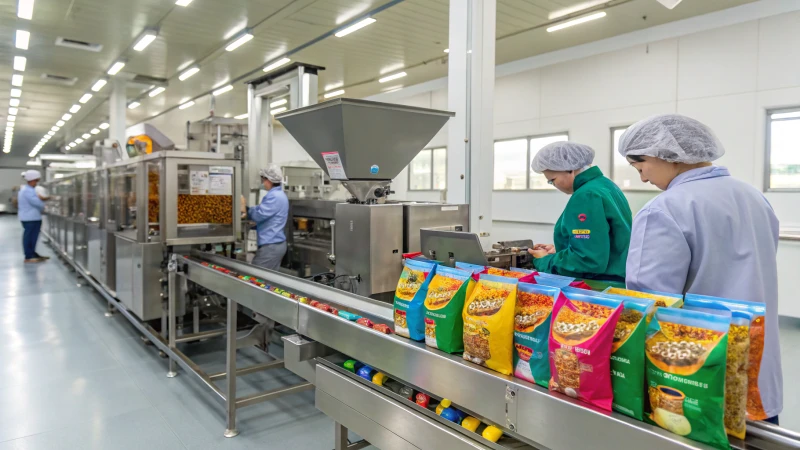
Manufacturing Equipment Costs
When I first dipped my toes into the pet food industry, the costs of manufacturing equipment12 were a major concern. Imagine setting up a mini factory in your garage—only instead of gadgets, it's filled with shiny machines ready to churn out gourmet kibble. For small to medium operations, the initial cost can range from $10,000 to $100,000 or more, depending on the technology and capacity needed. Investing in high-quality equipment is like buying peace of mind; it ensures durability and compliance with industry standards.
| Equipment Type | Estimated Cost Range |
|---|---|
| Small Scale Machines | $10,000 - $50,000 |
| Medium Scale Lines | $50,000 - $150,000 |
| Large Scale Systems | $150,000+ |
Raw Materials
Choosing the right raw materials felt like selecting ingredients for a gourmet recipe but for our furry friends. The quality of meat, grains, and additives directly impacts not only the product but also the cost. Imagine bulk buying for a family feast—it saves money but needs space. Similarly, bulk purchasing can lower costs but requires ample storage.
Packaging and Branding
I quickly learned that packaging was more than just wrapping. It was like dressing your product for success! The costs here include design, materials, and production. Opting for eco-friendly options can make your brand appealing to environmentally-conscious consumers but may stretch your budget a bit.
Marketing Expenses
Marketing became my megaphone to shout about my amazing dog food. Whether through digital campaigns or partnering with pet influencers, getting noticed required strategic spending. Budgeting for these activities could range from $5,000 to $50,000 annually depending on how loud you want your voice to be.
Regulatory Compliance
Navigating regulatory compliance felt akin to preparing for an exam—necessary but daunting. The costs included registering the business, acquiring permits, and adhering to pet food safety guidelines. These expenses ensure that you meet regulatory requirements13, which can vary by region.
Understanding Market Dynamics
Understanding market dynamics was like having a compass guiding my business decisions. Researching market trends and consumer preferences helped in planning investments wisely. Analyzing competitors and potential partners such as General Mills14 informed strategic choices that influenced cost structures and market positioning.
Pro Tip: Joining industry associations can provide networking opportunities and insights into market trends that could affect your budgeting strategy.
Small scale machines cost $10,000 to $50,000.True
The context specifies this cost range for small scale machines.
Marketing expenses exceed $100,000 annually.False
Marketing budgets range from $5,000 to $50,000 annually.
How Can You Market Your Dog Food Effectively?
When I first tried to market my dog food, it felt like barking up the wrong tree. But then I discovered some strategies that transformed my approach!
To market your dog food effectively, understand your audience, leverage digital marketing, create compelling content, and build trust through quality and transparency. Utilize social media, SEO, and partnerships to enhance visibility.

Understanding Your Audience
When I started out, I quickly realized that knowing my audience was key. I imagined creating buyer personas15, picturing the dog owners who would care most about what I offered. Were they more concerned about nutrition or price? With surveys and feedback, I gathered insights that shaped my marketing strategy.
Leveraging Digital Marketing
I remember the first time I explored digital marketing—it felt like a whole new world! Optimizing my website for SEO with phrases like "nutritious dog food" became my new mantra. Social media platforms like Instagram and Facebook allowed me to engage visually with dog lovers. Running interactive campaigns was a game-changer.
| Digital Channel | Strategy |
|---|---|
| Social Media | Run interactive campaigns and contests |
| Email Marketing | Send personalized tips and offers |
| SEO | Target long-tail keywords for organic traffic |
Creating Compelling Content
Content was where I let my creativity run wild. Whether it was writing blog posts about pet nutrition or sharing customer success stories, I found storytelling to be a powerful tool. Video content showcasing behind-the-scenes of production was particularly engaging—I even considered a YouTube series on dog care tips16.
Building Trust Through Quality
Trust didn't come overnight. It was built through transparency and quality. Clearly communicating the benefits of my dog food, like organic certifications, became essential. Partnering with vets or pet influencers helped add credibility, and showcasing these partnerships on my website served as powerful endorsements17.
Buyer personas help in targeting dog food marketing.True
Buyer personas provide insights into customer preferences, aiding targeted marketing.
SEO has no impact on dog food visibility online.False
SEO enhances online visibility by improving search engine rankings.
Conclusion
Learn how to create commercial dog food by developing balanced recipes, sourcing quality ingredients, adhering to regulations, and utilizing efficient production processes for a successful venture.
Discover how added sugars impact health and why limiting their intake is crucial. ↩
Learn about sustainable sourcing practices to ensure your ingredients are eco-friendly and ethically obtained. ↩
Discover how seasonal sourcing improves taste and supports local economies. ↩
Explore resources for connecting with trusted local suppliers. ↩
Learn effective auditing practices to maintain ingredient quality. ↩
Learn about extrusion's role in shaping and cooking dog food, enhancing digestibility and quality. ↩
Discover how vacuum packaging preserves freshness and extends the shelf life of dog food. ↩
Understand the importance of metal detectors in ensuring safety standards in pet food. ↩
Explore the rising demand for high-quality pet foods to align your production strategy. ↩
Learn how the FDA oversees pet food safety and regulations to ensure consumer protection. ↩
Discover how APPA membership offers regulatory updates and networking opportunities for pet product manufacturers. ↩
Explore top suppliers to find durable equipment that aligns with your production needs. ↩
Understand specific legal requirements to ensure your business complies with industry standards. ↩
Learn from successful partnerships to enhance your market strategy. ↩
Understanding buyer personas helps in tailoring marketing strategies to meet specific audience needs. ↩
Exploring popular YouTube channels can inspire you to create engaging content that resonates with dog owners. ↩
Endorsements from trusted figures can greatly enhance the perceived value and trustworthiness of your products. ↩


